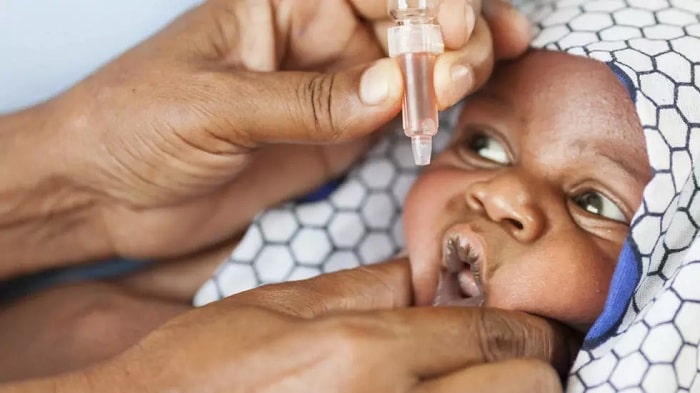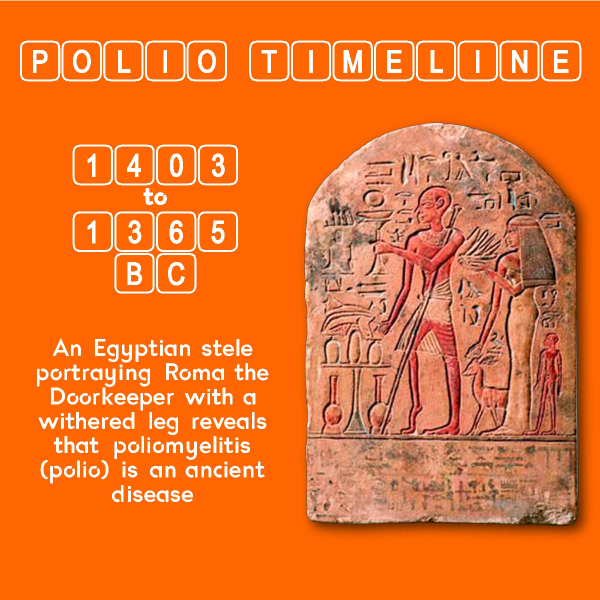Health
Polio Vaccine Makes Unexpected Comeback

The polio vaccine: Sicknesses and disorders have been around for quite a while now. Nonetheless, as clinical science advances, scientists and experts have come up with some staggering ways to counteract and even eradicate specific diseases through revolutionary inventions like the polio vaccine. Polio is a viral sickness caused by poliovirus. It can initiate paralysis and is known to influence infants and children.
Ironically, the very thing that was meant to suppress and eradicate the virus, is the one responsible for the chaos in some parts of the world. This form of polio is drastically increasing the chances of another outbreak. It will be the sort that spreads among under-immunised masses and communities from the oral vaccination itself.
History of Polio :
Polio has probably tormented the human civilization for a great many years. An Egyptian cutting from around 1400 BCE portrays a youngster with a leg disfigurement like one brought about by polio. Polio coursed in human populaces at low levels and gave off an impression of being a moderately remarkable illness for the vast majority of the 1800s.

Polio is an exceptionally infectious illness that affects individuals in unexpected ways — some don’t feel anything, others grumble of anything from a stomachache or spewing, fever to a sensitive throat, headaches or stiff neck. The infection completes its arrangement by first replicating itself in the digestive system, goes through the circulatory system where it can contaminate the spinal string and cerebrum. At the point when the infection imitates in and assaults the sensory system, that is when paralysis happens.
Polio cases grew to ridiculously massive numbers in the mid-1900s in nations with generally high expectations of living, when different sicknesses like diphtheria, typhoid, and tuberculosis were declining. Without a doubt, numerous researchers believe that advancements in cleanliness eagerly prompted an expanded occurrence of polio. The hypothesis is that previously, newborn children were exposed to polio, mostly through polluted water supplies, at an extremely youthful age. Babies’ invulnerable immune system, backed by maternal antibodies actually flowing in their blood, could rapidly crush poliovirus and then create enduring resistance against it. All things considered, when a youngster lacked maternal care he/she was more powerless against the illness.
On the account of far and wide immunization, polio was dispensed from the Western Hemisphere in 1994. In 2016, it keeps spreading in Afghanistan and Pakistan and to neighbouring nations occasionally. Live inoculation programs are being directed to eradicate these last pockets. Polio immunization is suggested overall due to the danger of imported cases.
Polio Vaccine derived virus represents an immense danger in countries including Asia and Africa. The sickness is seen to normally spread from the weakened or killed poliovirus that makes up the antibody.
To avoid such flare-ups brought about by vaccines, the World Health Organization (WHO) is set to favour a new kind of polio immunization, created through a consortium of global accomplices, for crisis approved use before the end of 2020, said a report in Nature.
The WHO’S goal-oriented polio annihilation program has directed a large number of inoculation drives in numerous pieces of the world since 1988, to extraordinary achievement. Polio is well headed to destruction in people, in the wake of killing more than 500,000 people yearly during the 1940s and 1950s at its pinnacle.
Global infections have dropped from over 350,000 in 1988 to just 33 in 2018, although the current pandemic threatens the eradication drive, setting it back by years.
Pockets of Afghanistan and parts of Pakistan are two countries in which wild polio is a threat today. Both of these countries are adversely impacted by medical illiteracy and misinformation about immunization treatments as well as hostile geographic obstacles that make immunization drives almost impossible.
An oral vaccine for the prevention of the disease exists and is administered to children worldwide, in vaccination drives conducted by their respective governments and health agencies. But, this vaccine is now used primarily to protect against the last remaining strain of naturally occurring or wild polio still circulating in Pakistan and Afghanistan.
Another form of polio still exists. This type of polio can be vaccine-derived polio, occurring in under-immunised populations due to the weakened poliovirus used in oral polio vaccine.
WHO to approve the novel vaccine for polio :
In recent news: WHO is reportedly all set to approve another kind of polio vaccine to prevent such outbreaks caused due to the most prevalent form of vaccine-derived poliovirus.
Why does the world need another polio vaccine?
Many people wonder why the world needs another polio vaccine, while we already have one that is administered orally. While successful vaccination drives for the naturally-found poliovirus have been conducted globally, it was found that a strain of vaccine-derived poliovirus, abbreviated as cVDPV, is circulating in19 African countries, Philippines, Malaysia, Yemen, China, Afghanistan and Pakistan. Although incidences of naturally-found poliovirus have been brought down around the world, cases of cVDPV have risen to 531, as compared to 366 in 2019.
Another cause for why the world may need another polio vaccine is that the injected form of the poliovirus vaccine is safer but ineffective at stopping transmission as it does not immunise the intestine.
“IPV protects against all forms of polio just as OPV does, but it has a different method of action: it only protects the individual but does little to prevent the onward spread of the virus,” said a WHO spokesperson on Global Polio Eradication Initiative. “OPV has a unique profile to interrupt person-to-person spread, hence why it is the primary tool in polio eradication.”
How vaccine-derived poliovirus can cause an outbreak :
The way oral polio vaccine works is, that it starts by immunizing the intestines when administered. Intestines are the primary site of infection for the poliovirus. The OPV has been safely administered to more than 3 billion children around the world and is also the prime contributor behind the world’s ever-growing herd immunity to polio.
But, just like the natural virus (given its highly contagious nature), even the OPV virus can spread among children and can cause an immune reaction in children who have not been vaccinated. In some rare cases, in under-immunised communities, the weakened virus can circulate among the population. As the virus spreads from child to child, it evolves and mutates. Over a long time, when a large number of children are not vaccinated, the mutated virus can become more virulent, dangerous and more difficult to contain. This can further lead to an outbreak.
This is what happened in many countries, including in India, where the last wild type 2 poliovirus was seen in 1999 but there were vaccine-derived type 2 outbreaks or cases up until 2013.
Vaccine-derived polio is typically caused by one of the three strains of the poliovirus, the type 2. Type 2 and 3 are also considered to be eradicated in the wild entirely as of 2019, and type 1 is what still circulates in Afghanistan and Pakistan.
The new vaccine :
Similar to the OPV, the new vaccine — novel OPV type 2 — also uses a form of a live virus, but it has been genetically modified to prevent it from mutating into a more virulent form.
Researchers at National Institute for Biological Standards and Control, UK, and the US Centers for Disease Control and Prevention, worked on understanding the parts of the viral RNA which were mutating in the vaccines to revert the virus to a more virulent state.
The team edited and modified these parts of the RNA at crucial points making it harder for the virus to undo the edits and become more virulent.
The scientists additionally modified the virus to not recombine with other viruses found in the human intestines. They also modified its RNA so as to slow down its speed of evolution and mutation.
This new vaccine is powerful enough to evoke an immune response through vaccination while being weak enough not to mutate into a more virulent form of the virus. The vaccine went into phase 1 safety trials in 2015, funded by the Bill and Melinda Gates Foundation. Two phase-2 trials have been completed but results are as yet unpublished.
Large scale trials are still needed, but the risk of smaller outbreaks with more of the existing vaccines is increasing the risk of losing control over polio, say experts. The risk of the new vaccine not causing polio again still exists as bigger trials hasn’t been conducted yet.
Emergency use listing was a procedure that was put in place during the 2014-16 Ebola outbreak in West Africa and will also be used for emergency Covid-19 vaccines.
You Should Not Get Polio Vaccine If :
- You have any severe, life-threatening allergies.
- You ever had a life-threatening allergic reaction after a dose of IPV, or have a severe allergy to any part of this vaccine, you may be advised not to get vaccinated. Ask your health care provider if you want information about vaccine components.
- You are not feeling well
If you have a mild illness, such as a cold, you can probably get the vaccine today. If you are moderately or severely ill, you should probably wait until you recover. Your doctor can advise you.

















































